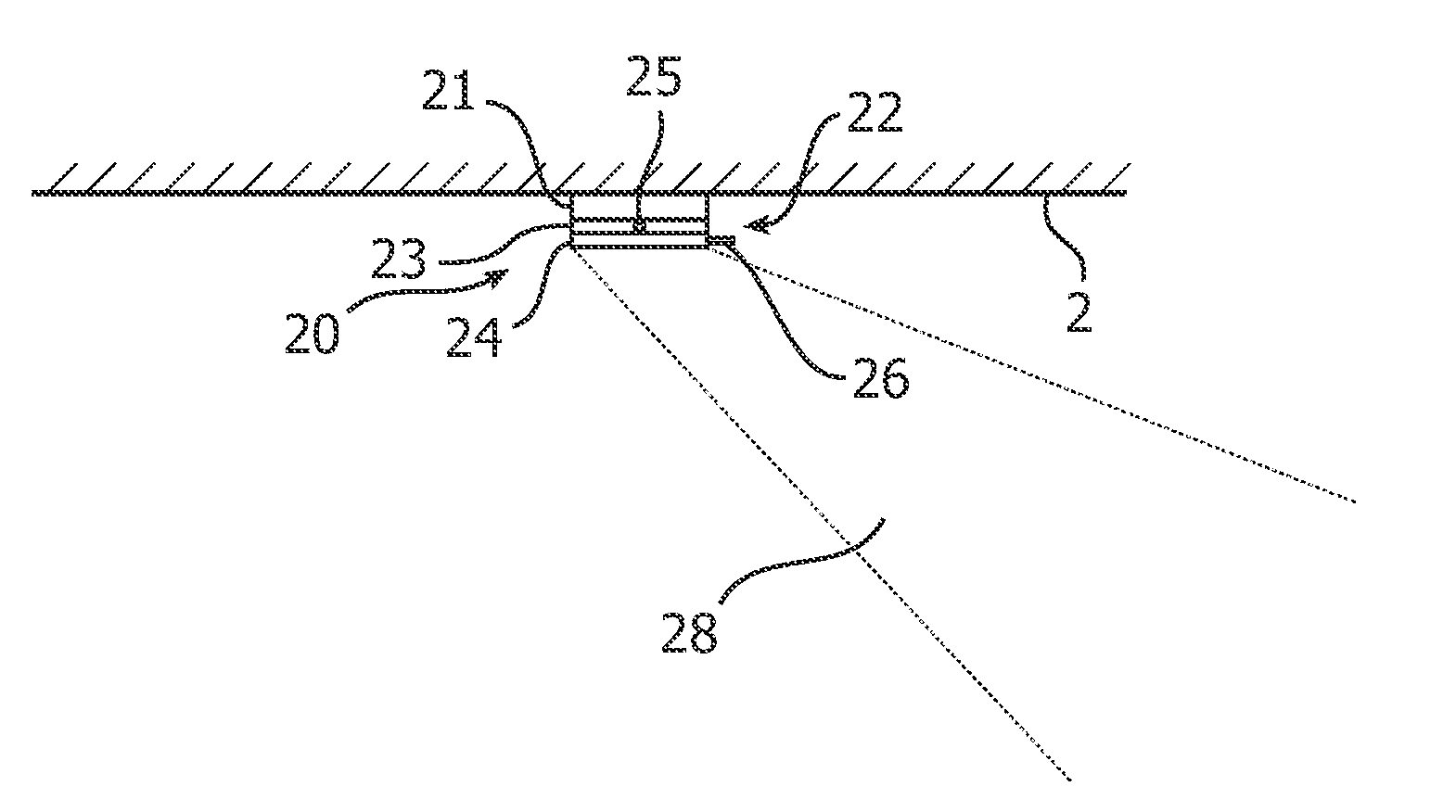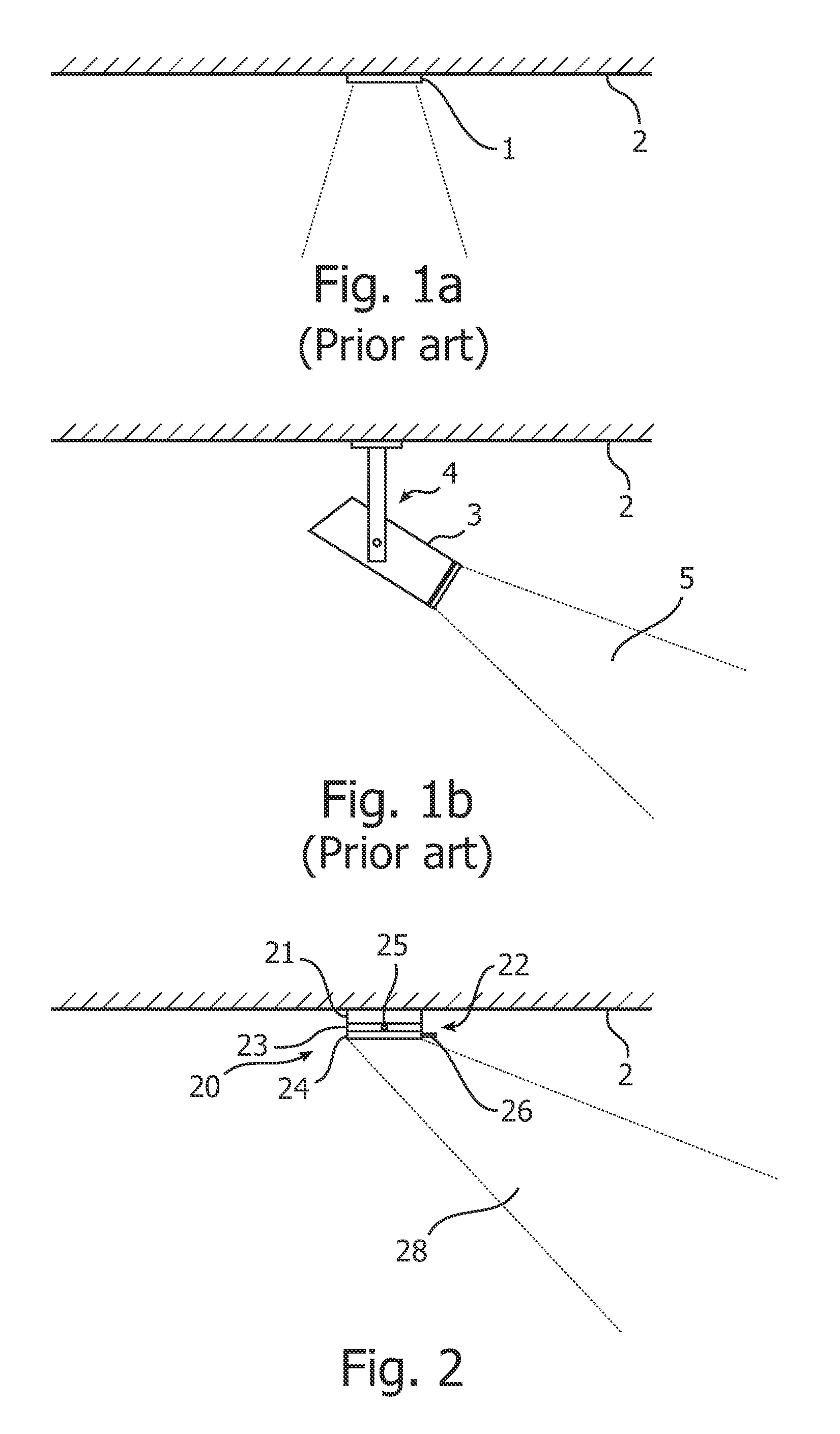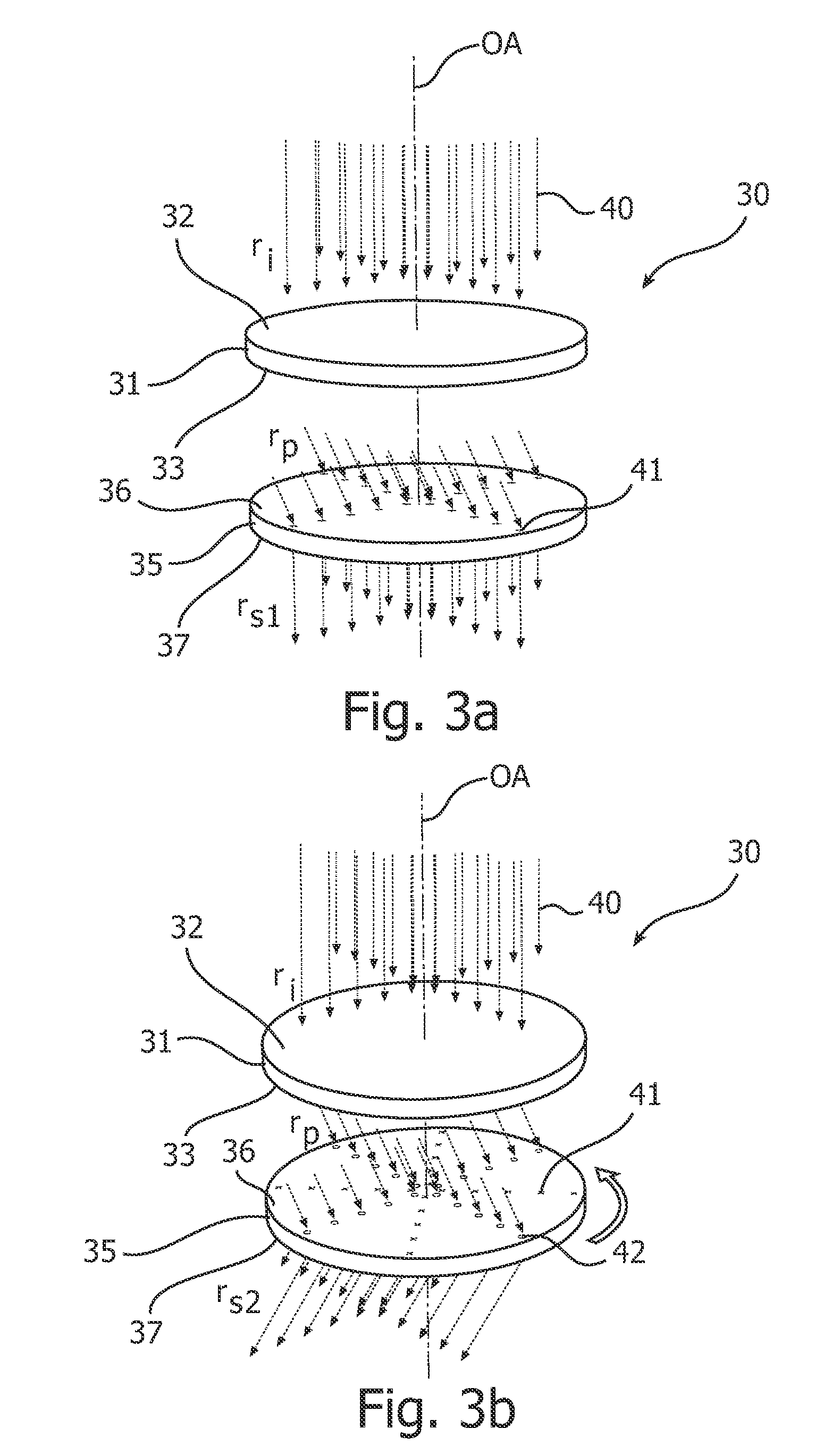Beam direction controlling device and light-output device
a technology of beam direction and control device, which is applied in the direction of fixed installation, lighting and heating apparatus, instruments, etc., can solve the problems of not being as obvious as currently, and achieve the effect of simple and robust control
- Summary
- Abstract
- Description
- Claims
- Application Information
AI Technical Summary
Benefits of technology
Problems solved by technology
Method used
Image
Examples
first embodiment
FIGS. 4a-b schematically illustrate the beam direction controlling device according to the present invention in different beam direction controlling states.
In FIGS. 4a-b, the first 46 and second 47 optical elements comprised in the beam direction controlling device 45 are provided in the form of prism plates, or prism foils, as is schematically indicated in the figures.
Such prism plates or foils are currently used in liquid crystal displays, LCDs, to aim the image output by the LCD in a given, fixed direction towards the expected position of a viewer.
By arranging two such prism plates in the manner indicated in FIGS. 4a-b, both the azimuth angle and the polar angle of the light-beam can be determined at will (within a certain polar angular range) by appropriately rotating the first 46 and second 47 optical elements.
In both FIG. 4a and FIG. 4b, the first optical element 46 is oriented in such a way that the incident light-rays 40 are redirected from the initial direction ri to the pr...
second embodiment
FIGS. 6a-b schematically illustrate the beam direction controlling device according to the present invention in different beam direction controlling states.
In FIGS. 6a-b, the first 61 and second 62 optical elements comprised in the beam direction controlling device 60 comprise lenticular arrays, as is schematically indicated in the figures.
By arranging two lenticular arrays in the manner indicated in FIGS. 6a-b, both the azimuth angle and the polar angle of the light-beam can be determined at will (within a certain polar angular range) by appropriately laterally translating the second optical element 62 in relation to the first optical element 61.
Since each lenticular 63 comprised in the first optical element 61 in FIG. 6a is a positive lens, the incident light hitting a lenticular 63 will be converged by the lenticular 63.
Considering a plurality of parallel light-rays 40, each hitting a respective lenticular 63 in a given position in an incident direction ri, each of these light-ra...
third embodiment
Finally, with reference to FIGS. 13a-b, the beam direction controlling device according to the present invention will now be described.
As can be seen in FIGS. 13a-b, the beam-direction controlling device 80 according to the present third embodiment differs from the previously described beam direction controlling devices in that a third optical element 81, in the form of a third lenticular array in between the first 61 and second 62 optical elements (referring also to FIG. 8). The focal length of the lenticulars 82 in the third lenticular array is chosen such that the third lenticular array 81 images the first lenticular array 61 onto the second lenticular array 62. Preferentially, the third lenticular array 81 is placed in the focal plane of the first lenticular array 61 which coincides with the focal plane of the second lenticular array 62.
As is illustrated in FIG. 13a, the function of the lenticulars 82 in the third lenticular array 81 is to make a point-to point image of the lent...
PUM
 Login to View More
Login to View More Abstract
Description
Claims
Application Information
 Login to View More
Login to View More - R&D
- Intellectual Property
- Life Sciences
- Materials
- Tech Scout
- Unparalleled Data Quality
- Higher Quality Content
- 60% Fewer Hallucinations
Browse by: Latest US Patents, China's latest patents, Technical Efficacy Thesaurus, Application Domain, Technology Topic, Popular Technical Reports.
© 2025 PatSnap. All rights reserved.Legal|Privacy policy|Modern Slavery Act Transparency Statement|Sitemap|About US| Contact US: help@patsnap.com



